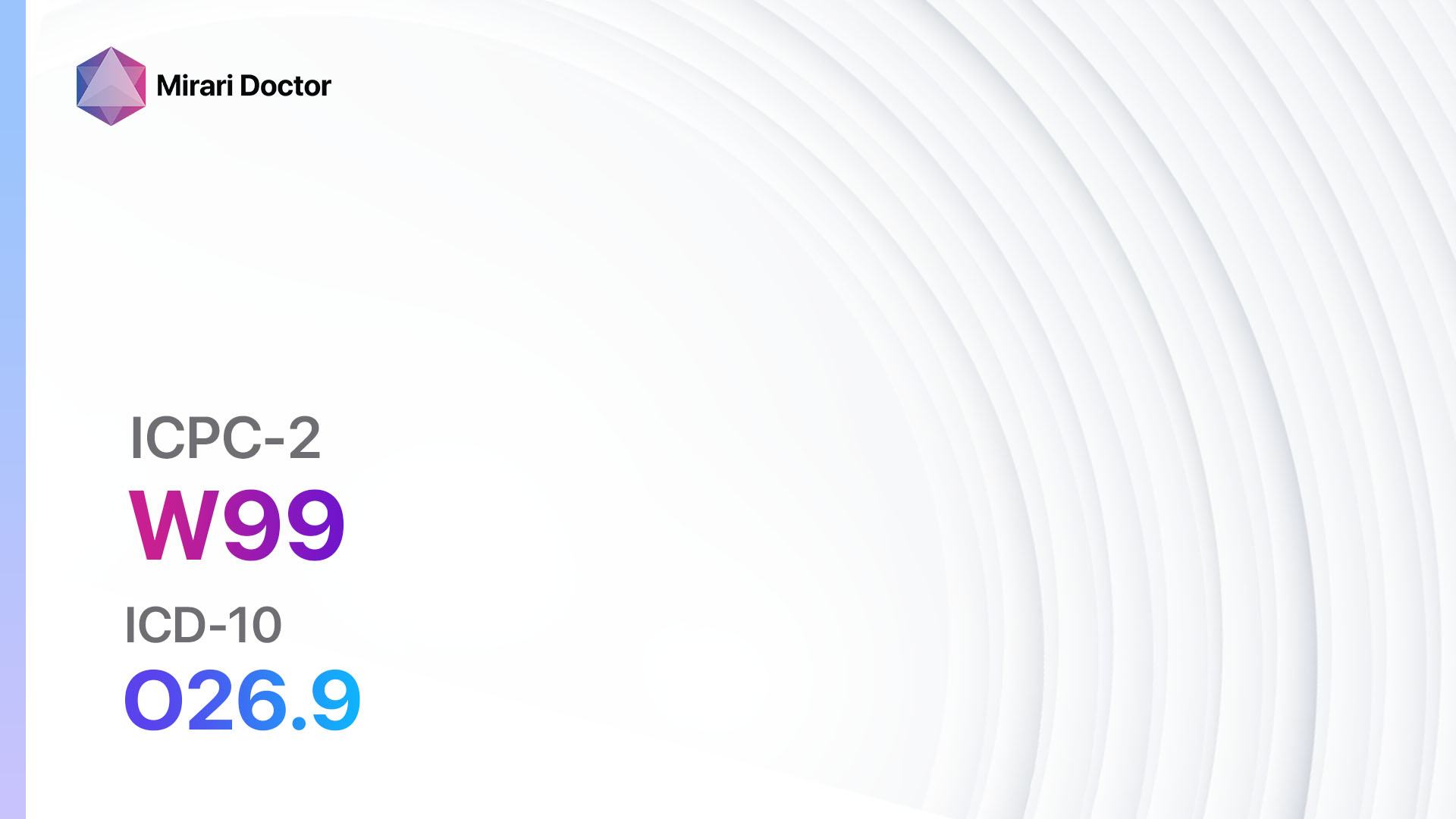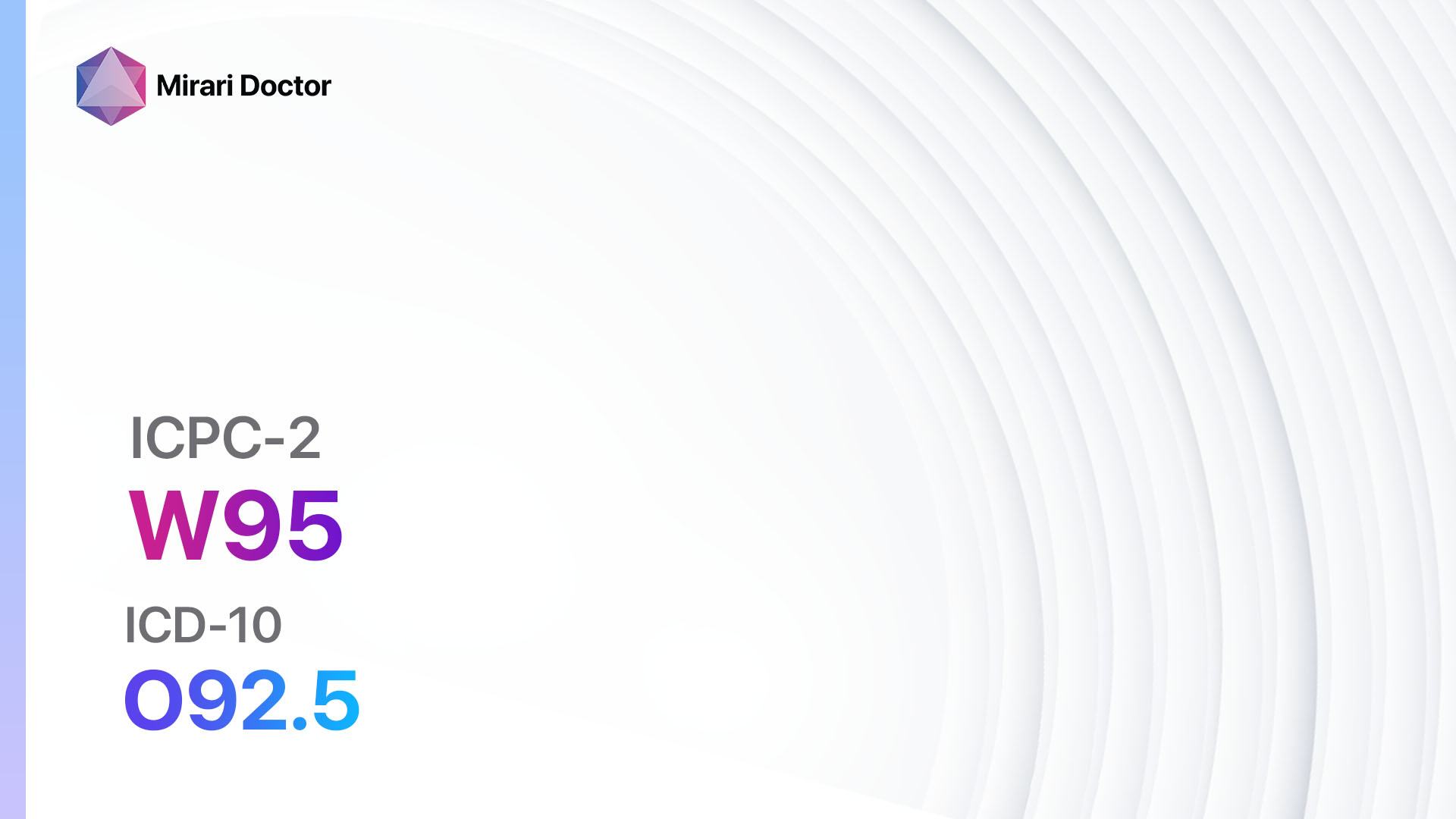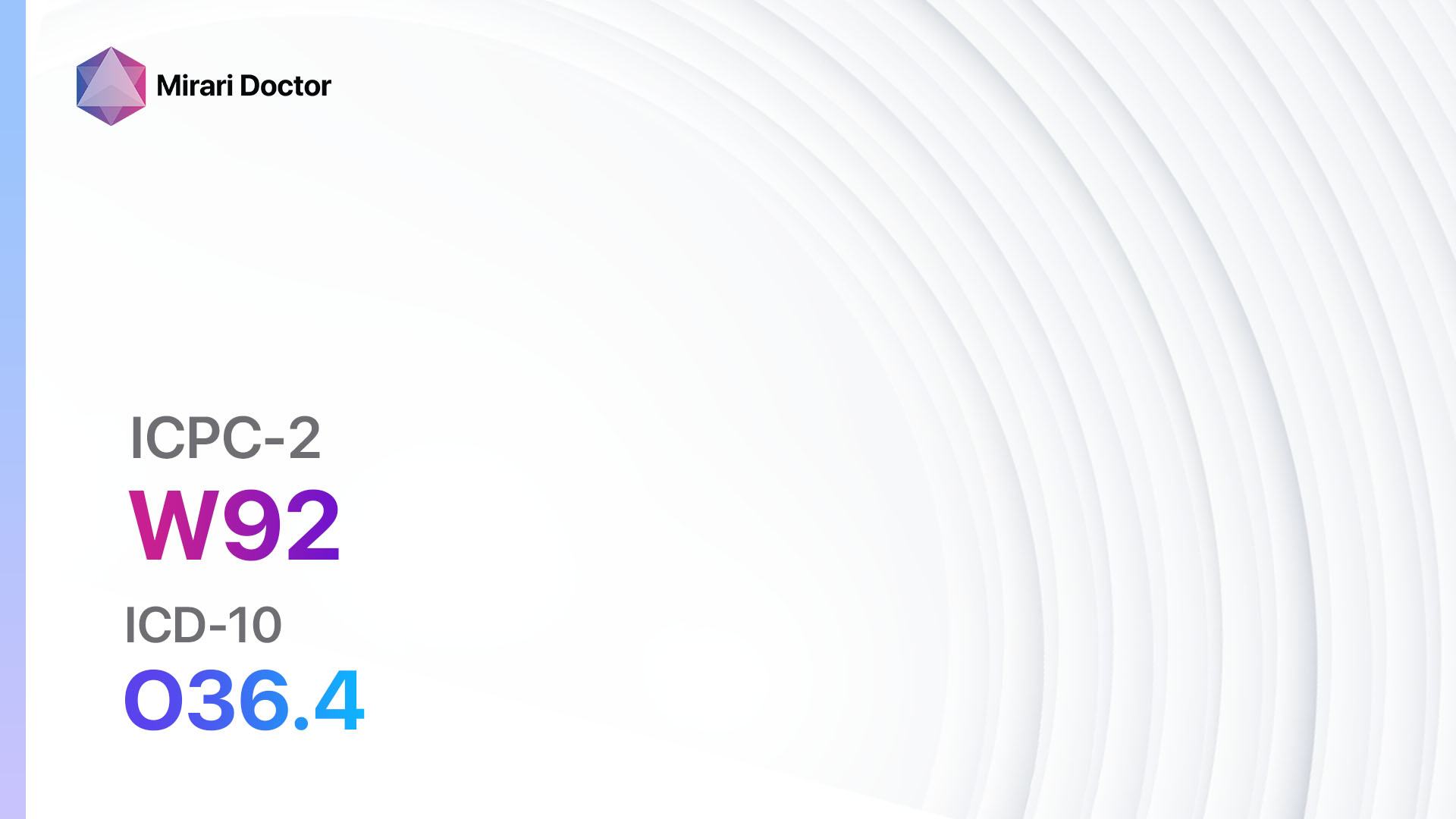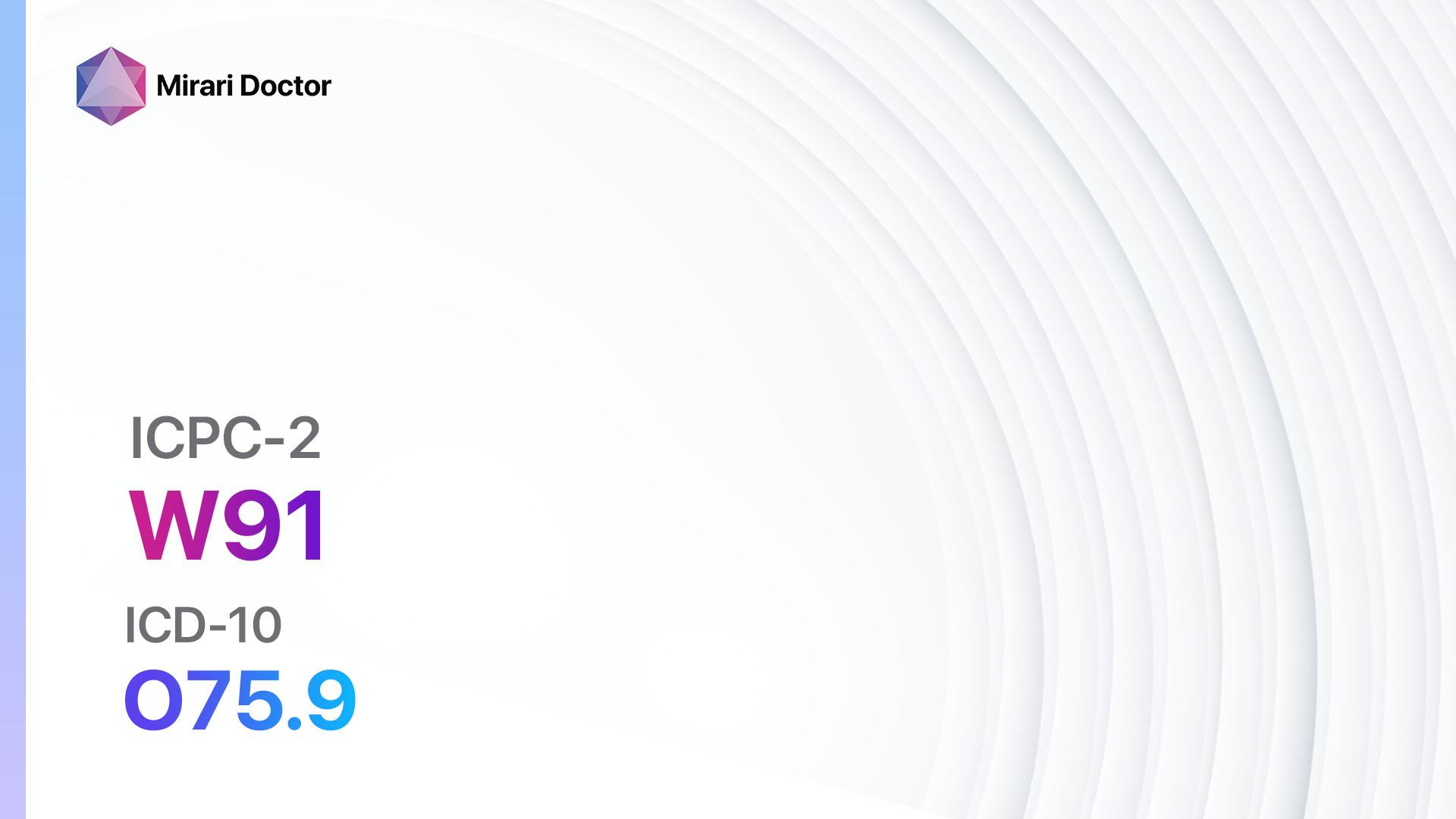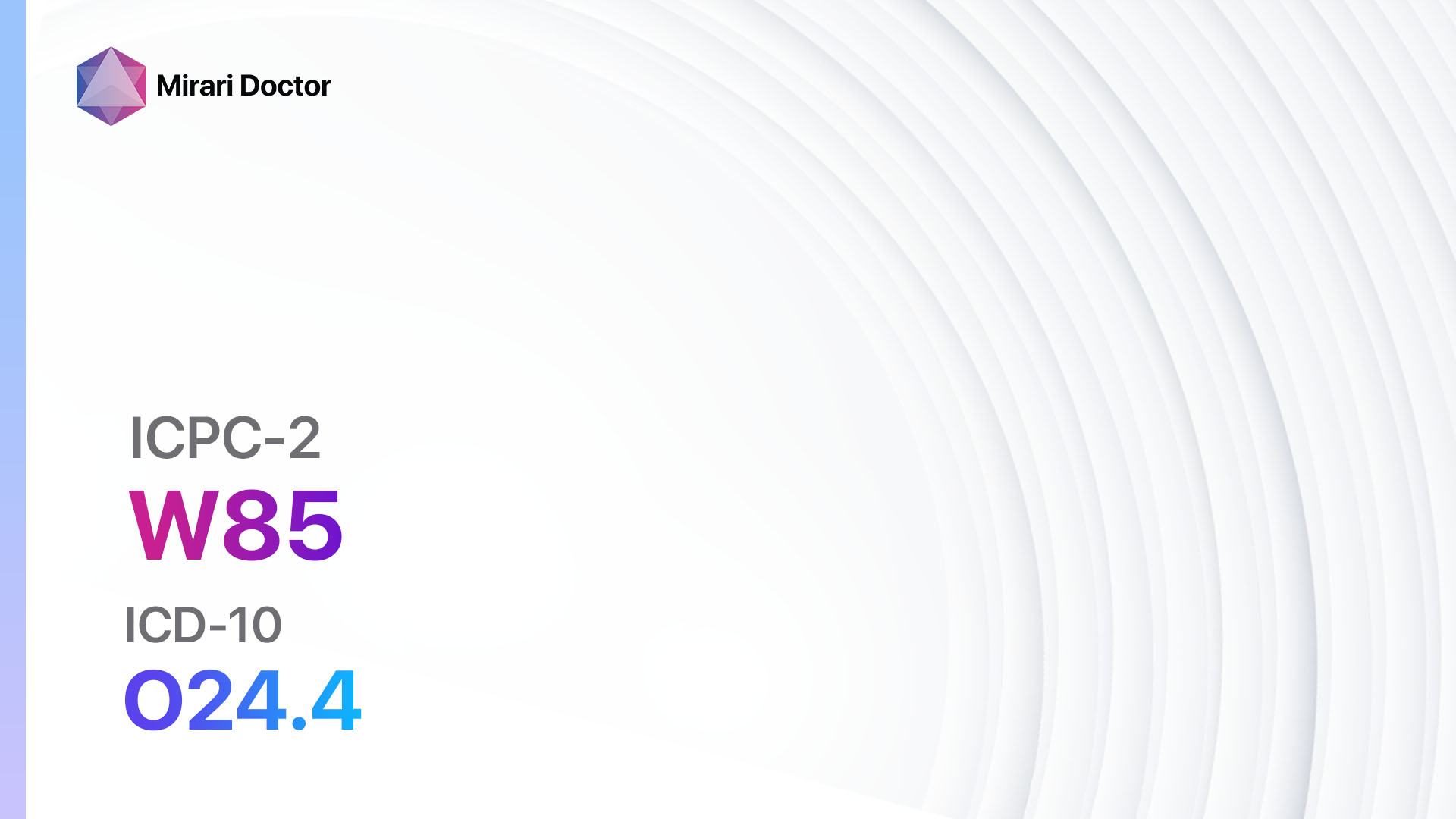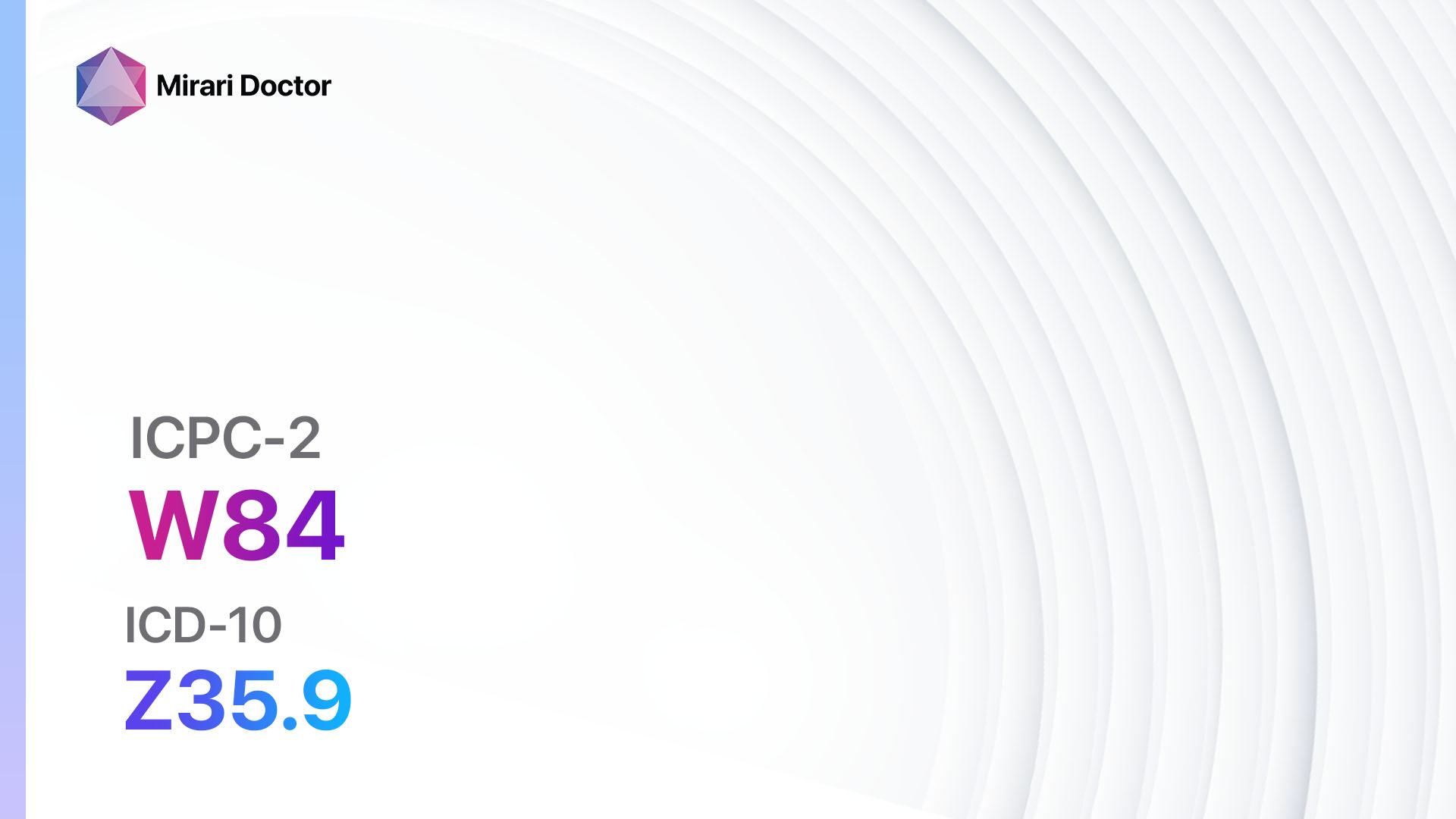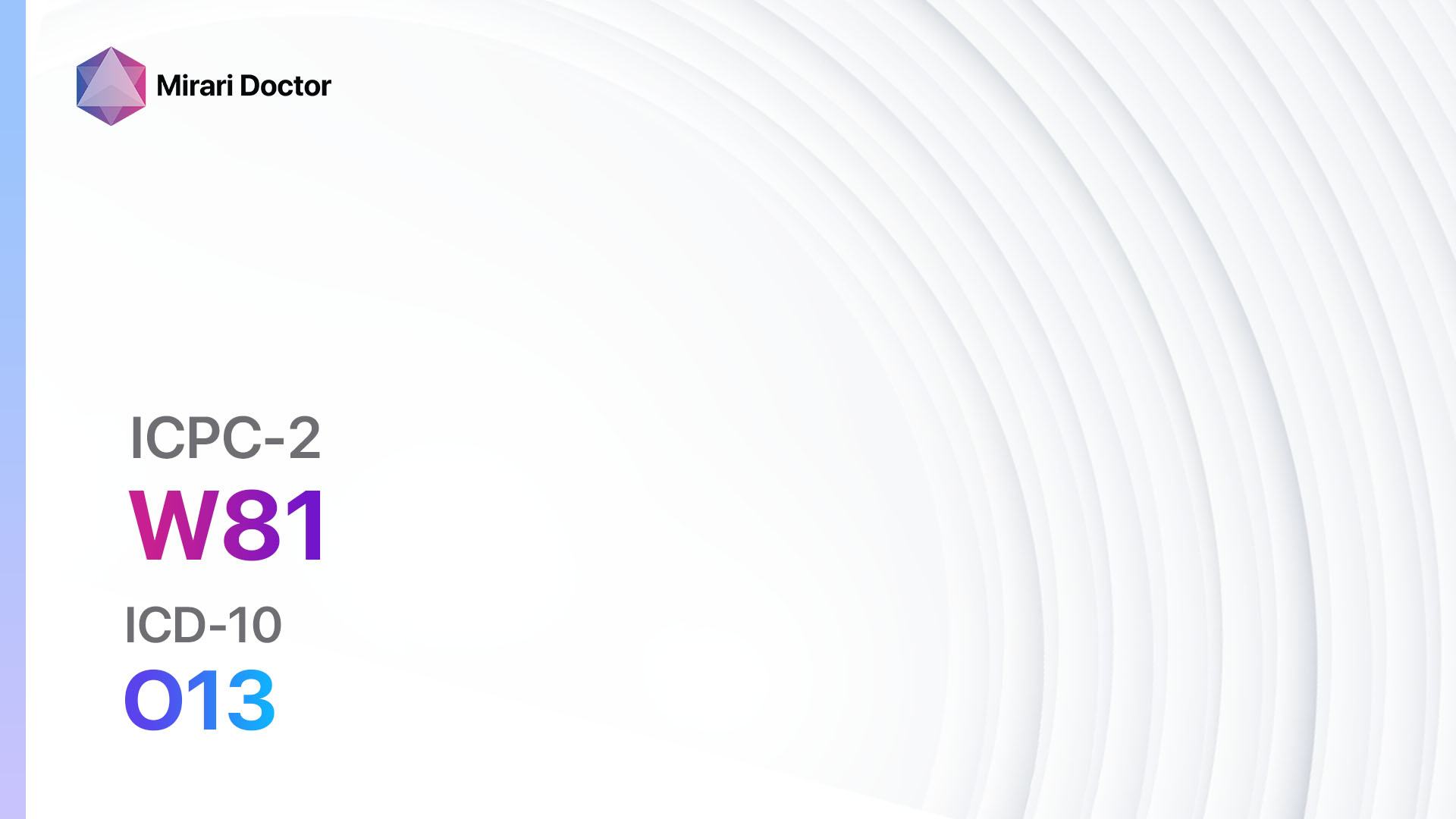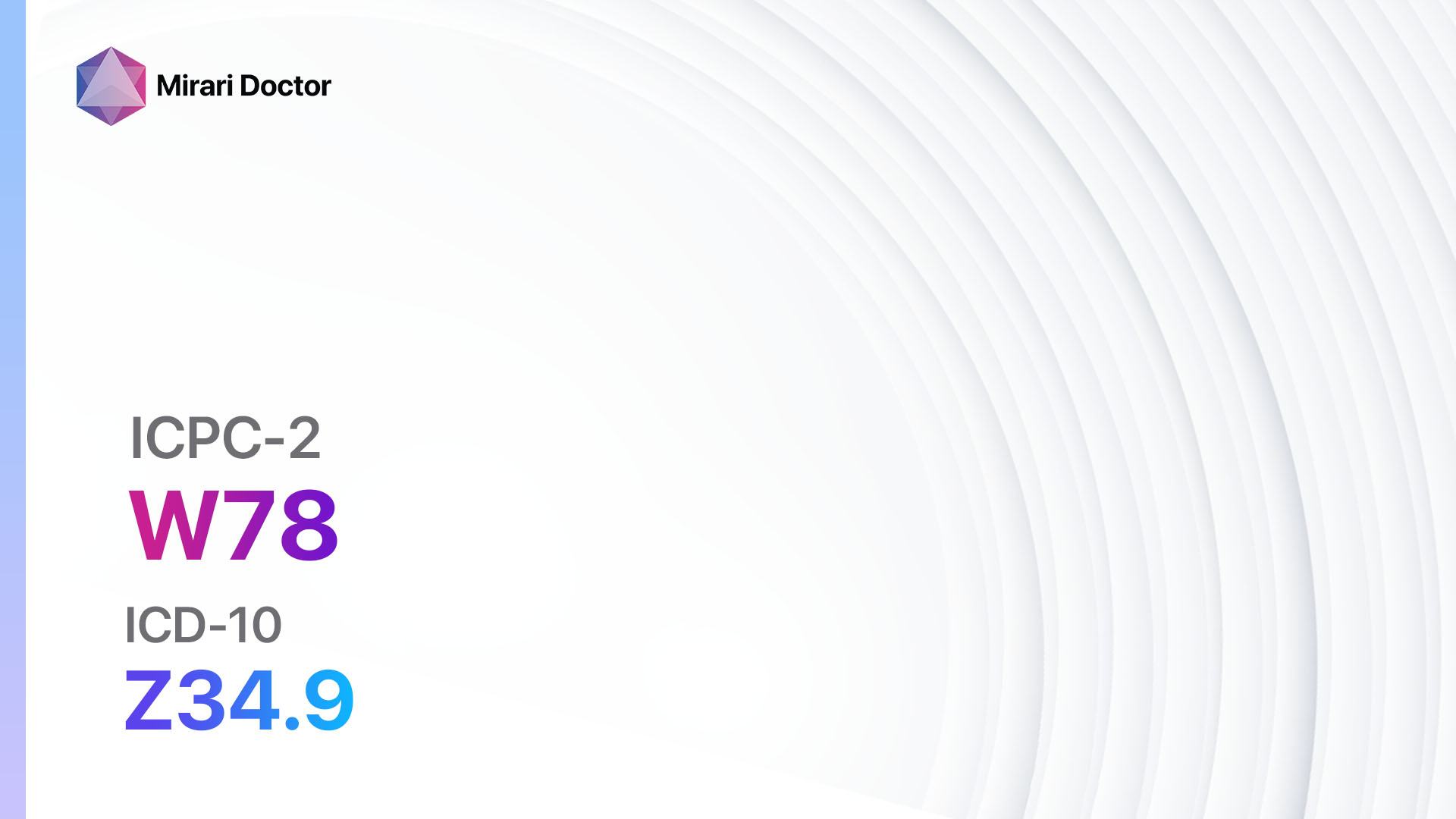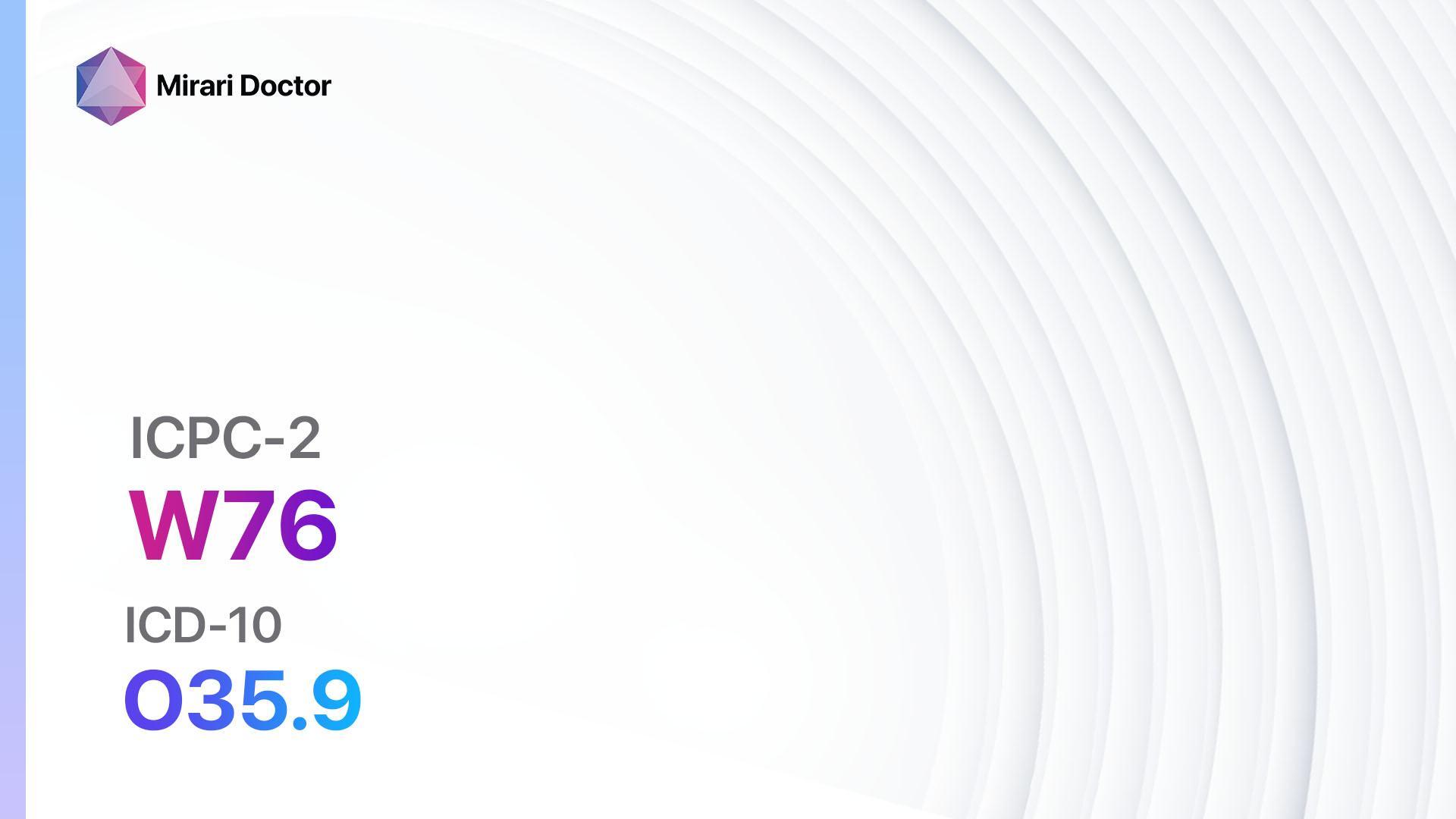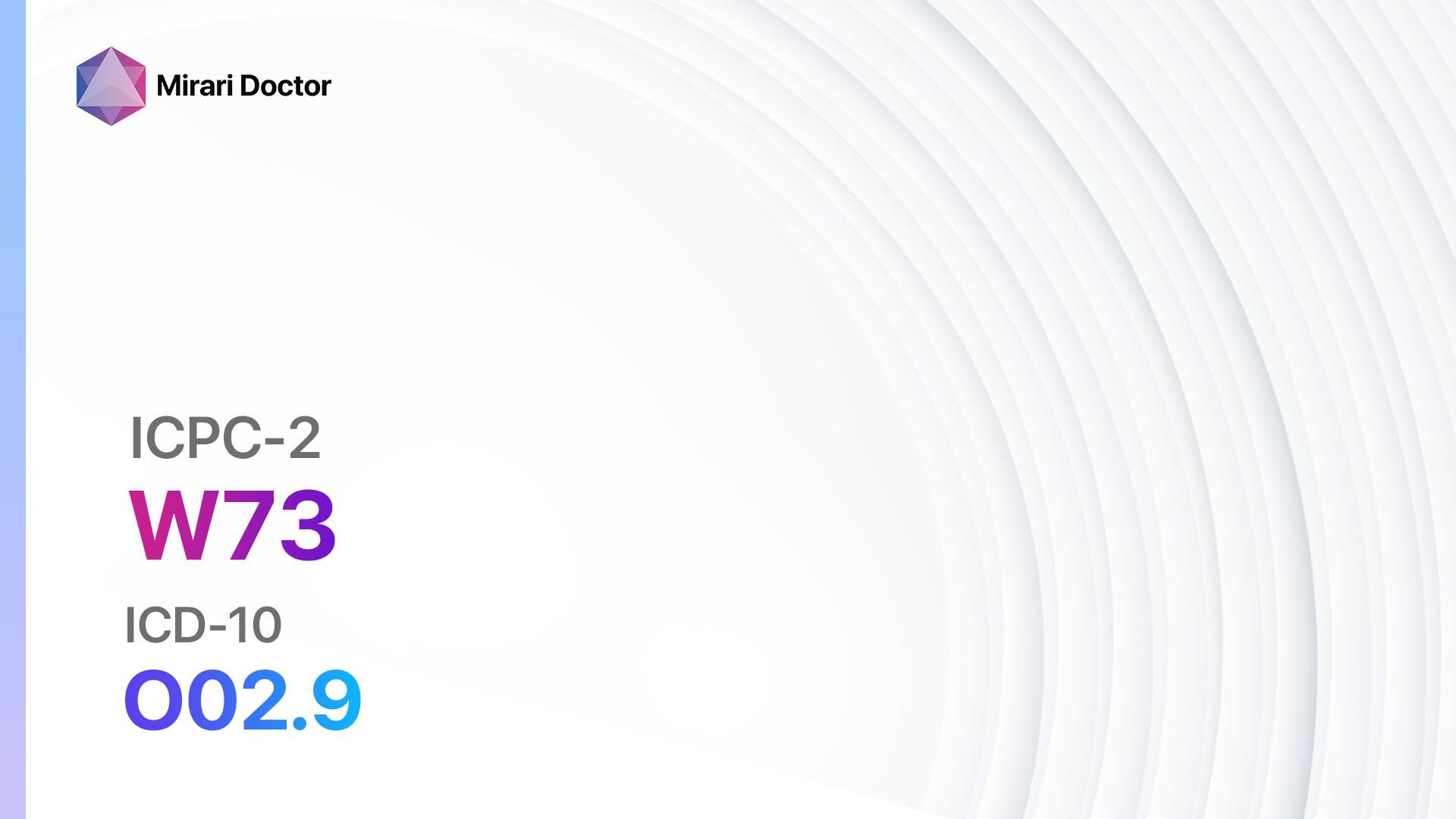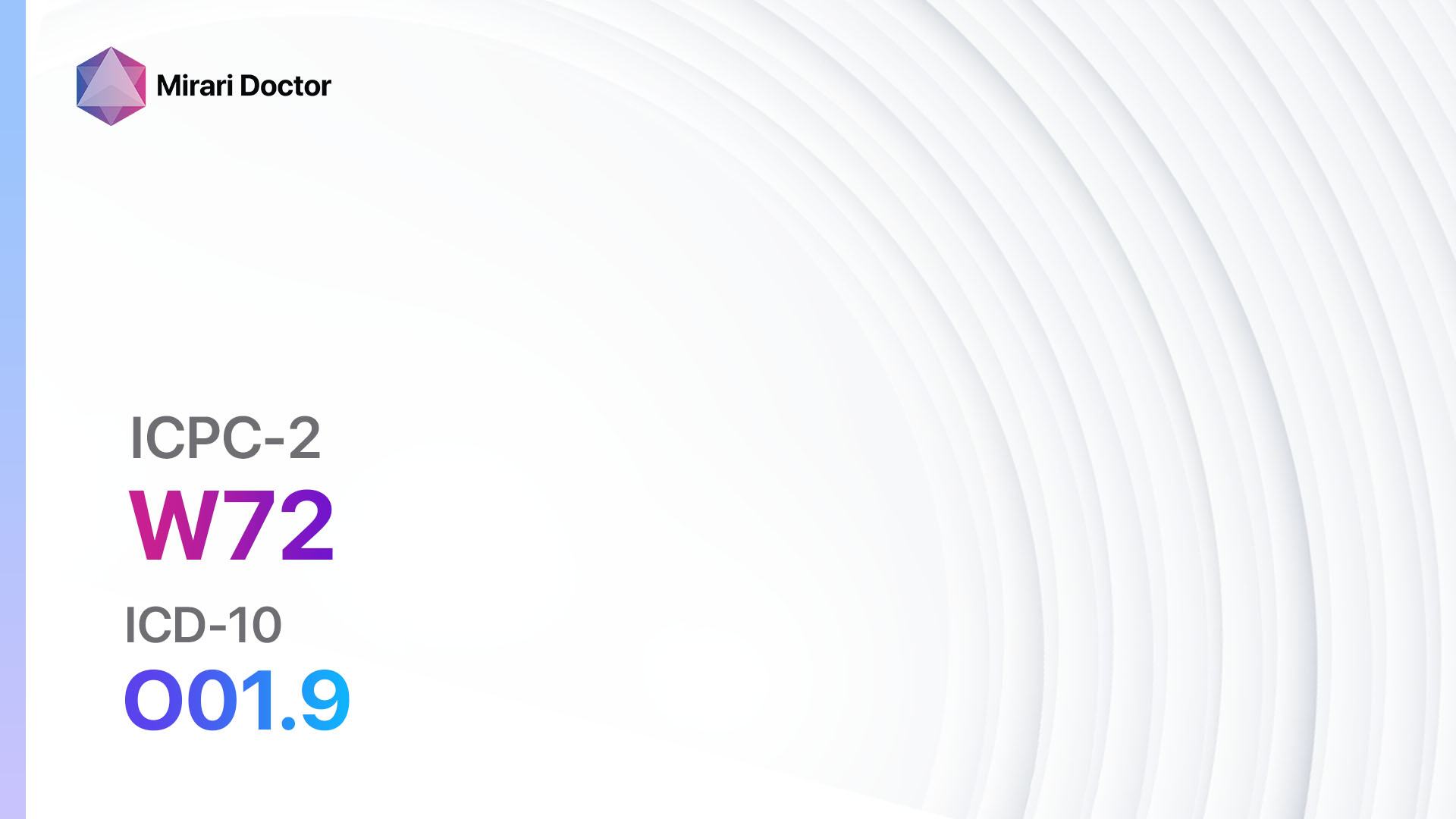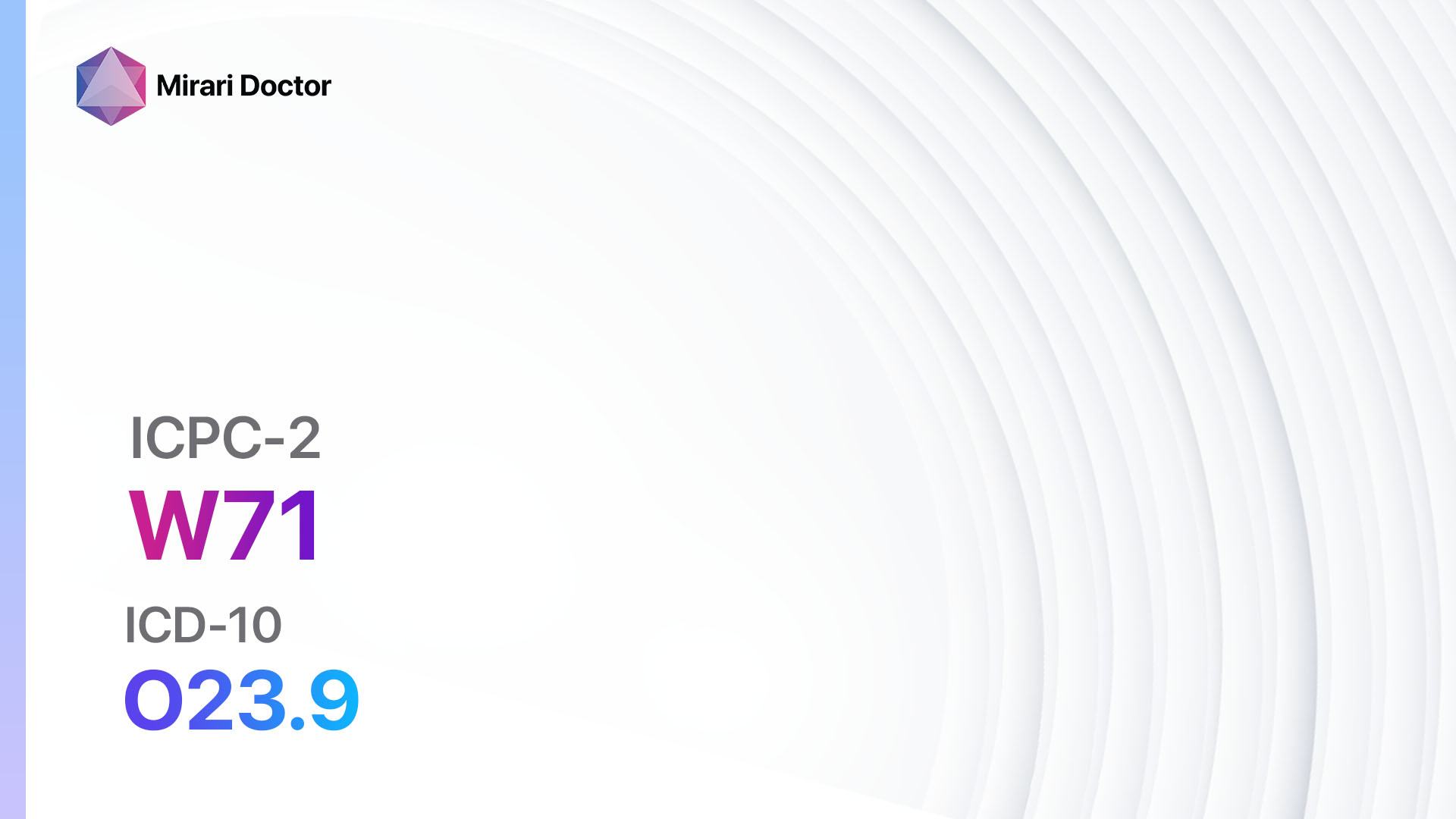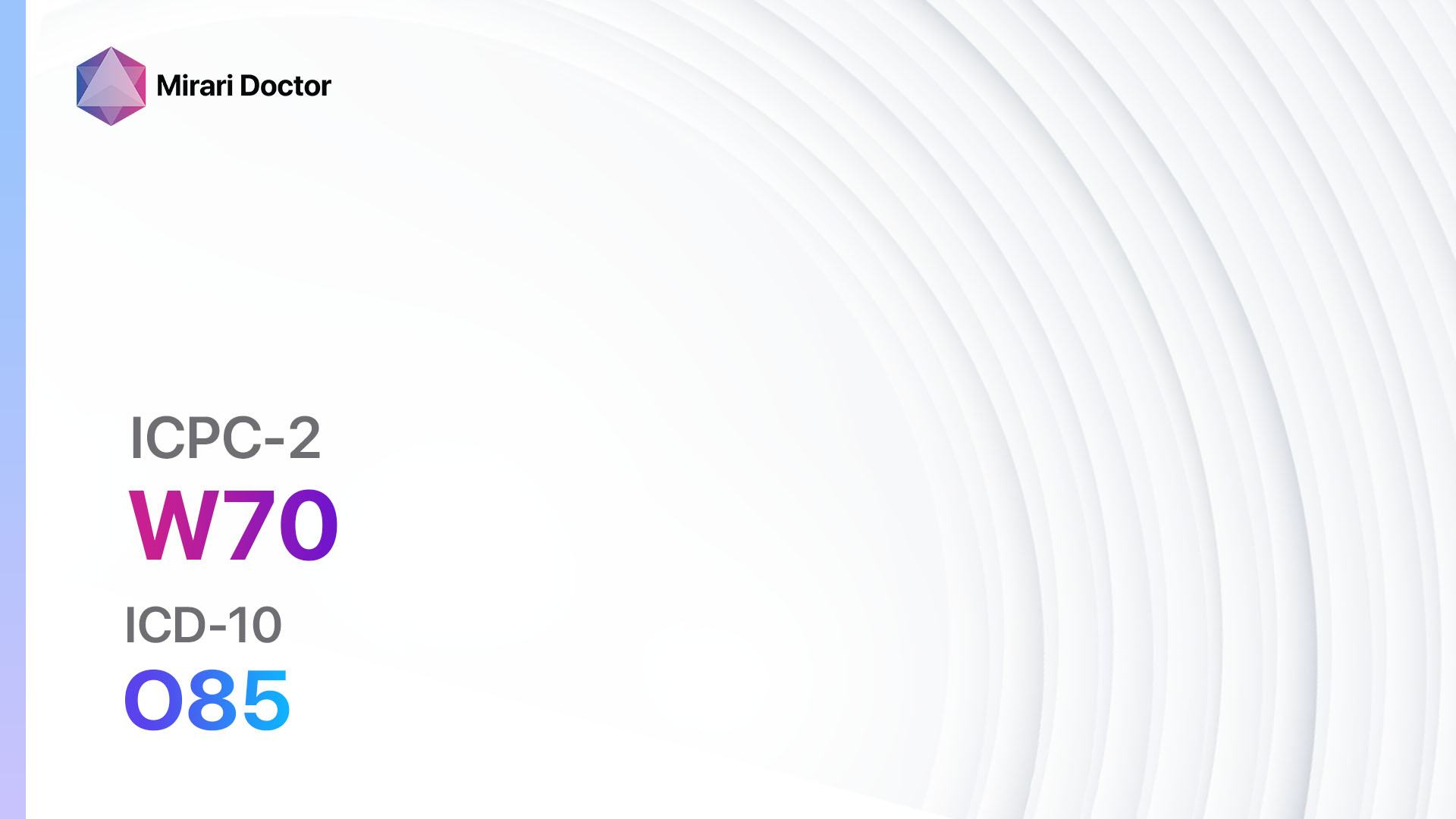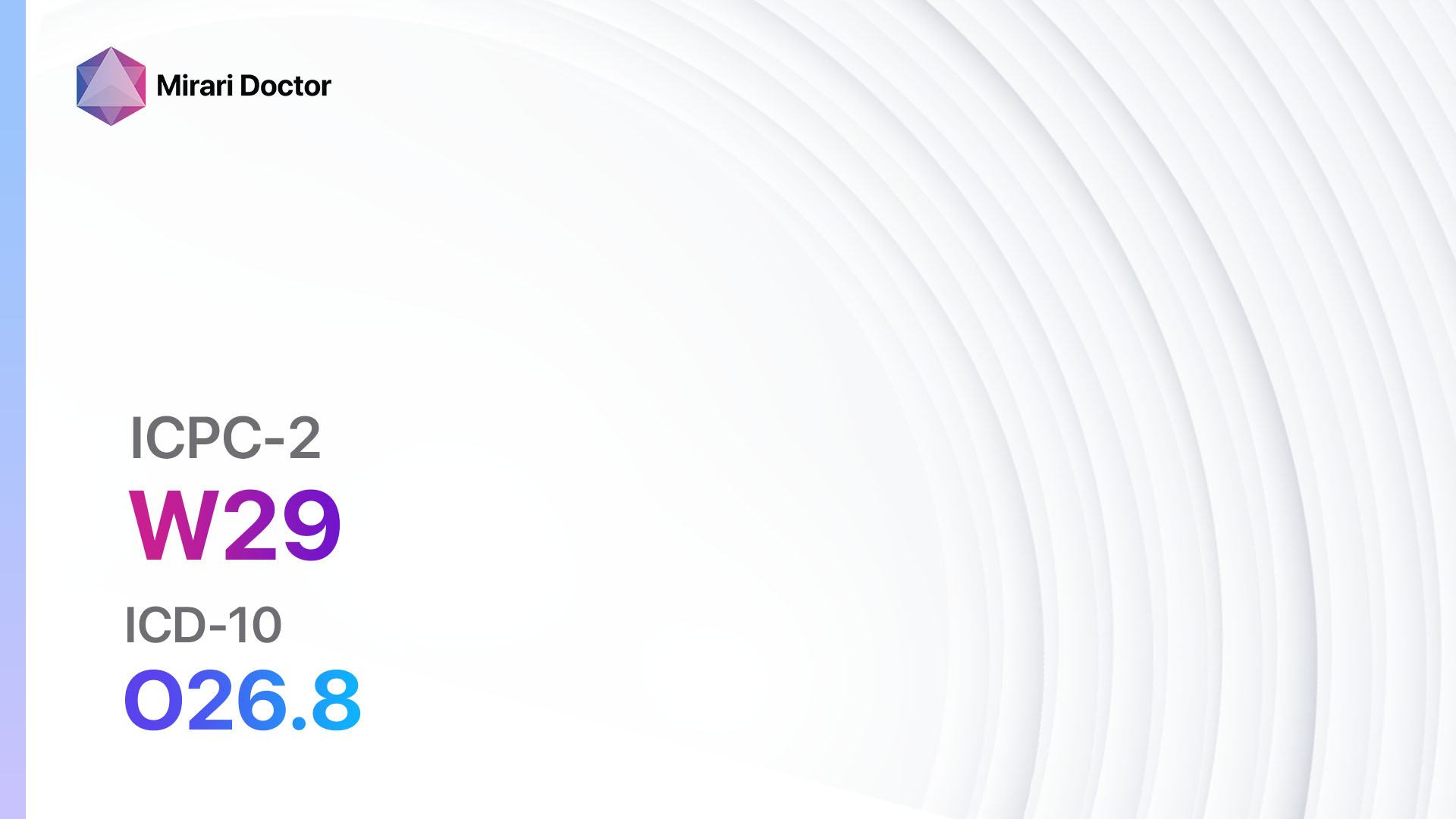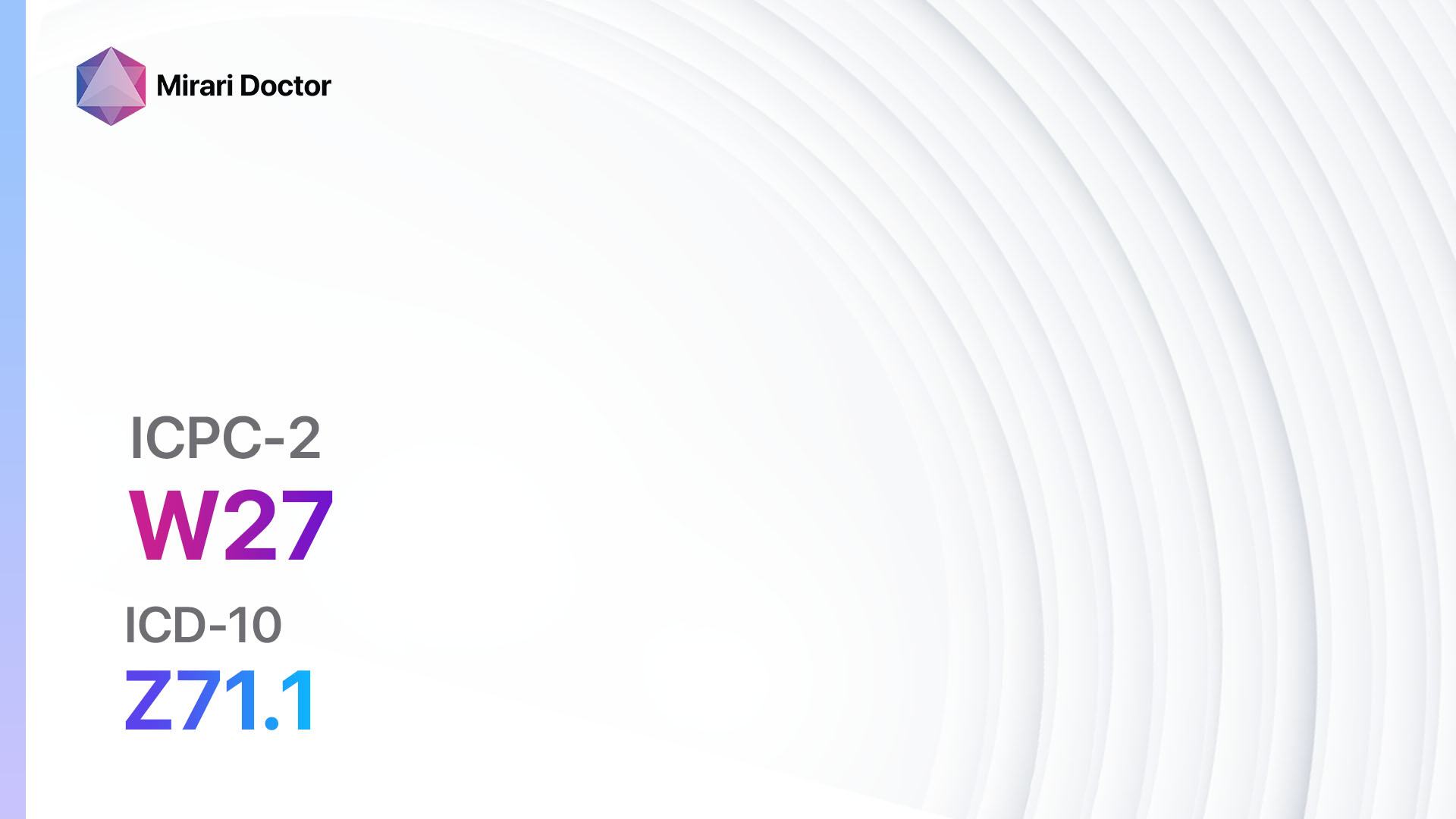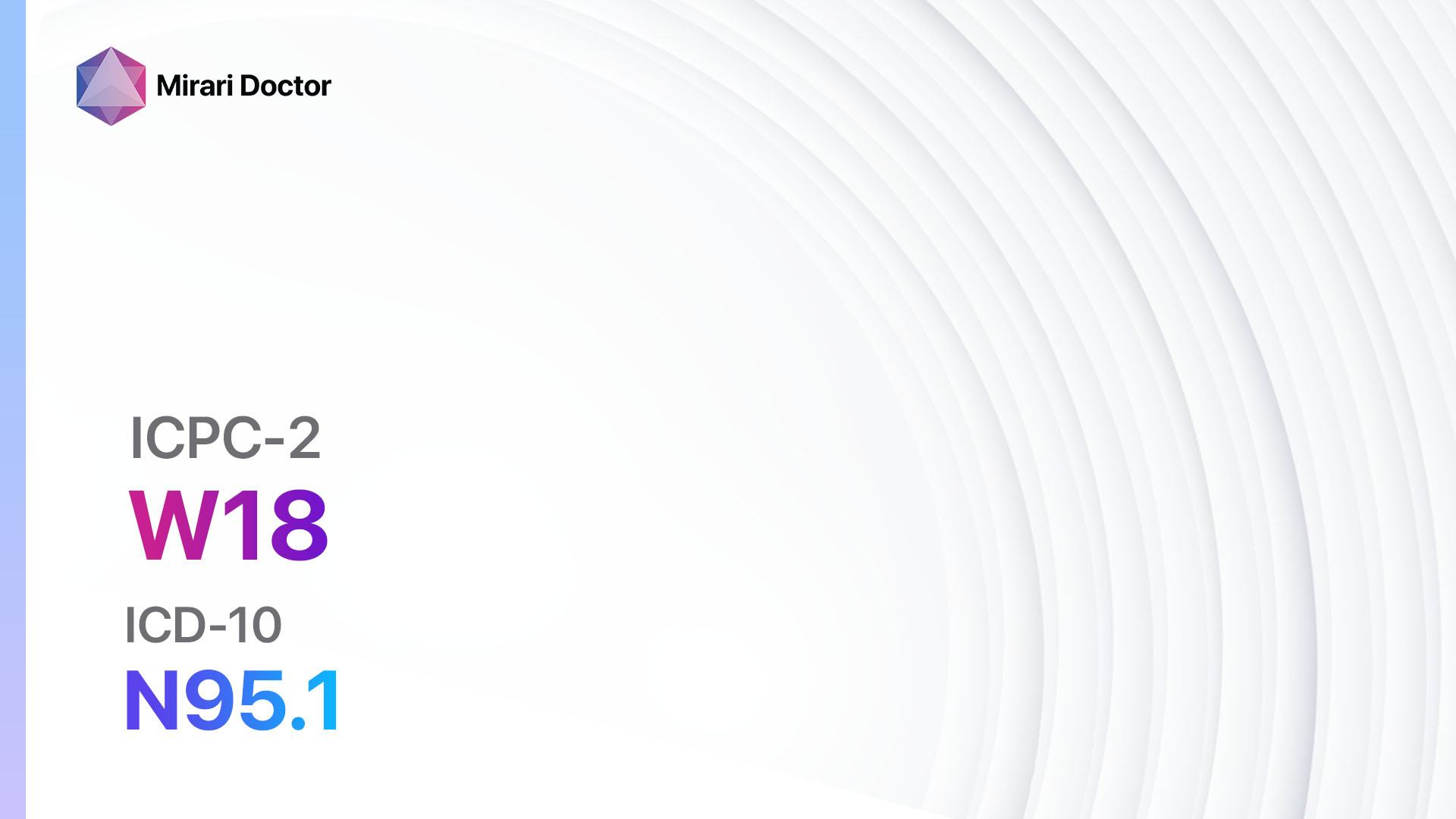
Introduction
Complicated labour/delivery stillbirth refers to the unfortunate event of a baby being born without any signs of life after 20 weeks of gestation[1]. This condition is emotionally devastating for the parents and requires immediate medical attention. The aim of this guide is to provide healthcare professionals with a comprehensive overview of the symptoms, causes, diagnostic steps, possible interventions, and follow-up care for complicated labour/delivery stillbirth.
Codes
- ICPC-2 Code: W93 Complicated labour/delivery live/stillbirth[2]
- ICD-10 Code: O75.9 Complication of labour and delivery, unspecified[3]
Symptoms
- Absence of fetal movement
- Absence of fetal heartbeat
- Vaginal bleeding
- Uterine contractions
- Decreased fetal movement or activity[4]
Causes
- Placental abruption
- Umbilical cord accidents
- Infection
- Maternal health conditions (e.g., diabetes, hypertension)
- Genetic abnormalities
- Maternal age
- Multiple pregnancies
- Trauma or injury[5][6]
Diagnostic Steps
Medical History
- Gather information about the mother’s medical history, including any pre-existing conditions, previous pregnancies, and any complications during pregnancy.
- Ask about any symptoms experienced by the mother leading up to the stillbirth, such as decreased fetal movement or vaginal bleeding[7].
Physical Examination
- Perform a thorough physical examination of the mother, including a pelvic examination to assess for any signs of trauma or infection.
- Assess the mother’s vital signs, including blood pressure and heart rate[8].
Laboratory Tests
- Complete blood count (CBC) to assess for any signs of infection or anemia.
- Blood glucose levels to rule out gestational diabetes.
- Blood type and Rh factor to determine if there are any potential blood compatibility issues.
- Testing for infections, such as TORCH (Toxoplasmosis, Rubella, Cytomegalovirus, Herpes simplex) panel, syphilis, and HIV[9].
Diagnostic Imaging
- Ultrasound to confirm the absence of fetal heartbeat and assess for any structural abnormalities or placental issues.
- Magnetic resonance imaging (MRI) may be used in certain cases to provide more detailed images of the fetus and placenta[10].
Other Tests
- Genetic testing, including chromosomal analysis, to identify any genetic abnormalities.
- Autopsy to determine the cause of stillbirth and provide closure for the parents.
Follow-up and Patient Education
- Provide emotional support and counseling to the parents, including information about grief counseling and support groups.
- Schedule follow-up appointments to monitor the physical and emotional well-being of the mother.
- Educate the parents about the importance of seeking medical attention for any future pregnancies and the potential risks associated with complicated labour/delivery stillbirth.
Possible Interventions
Traditional Interventions
Medications:
Top 5 drugs for Complicated labour/delivery stillbirth:
- Oxytocin:
- Cost: $10-$50 per vial.
- Contraindications: Hypersensitivity to oxytocin, fetal distress, abnormal fetal position.
- Side effects: Nausea, vomiting, uterine hyperstimulation.
- Severe side effects: Uterine rupture, water intoxication.
- Drug interactions: Nonsteroidal anti-inflammatory drugs (NSAIDs), vasopressors.
- Warning: Continuous fetal monitoring is required.
- Misoprostol:
- Cost: $5-$20 per tablet.
- Contraindications: Hypersensitivity to misoprostol, previous cesarean delivery, placenta previa.
- Side effects: Abdominal pain, diarrhea, fever.
- Severe side effects: Uterine rupture, severe bleeding.
- Drug interactions: None reported.
- Warning: Should not be used in women with a history of uterine surgery.
- Mifepristone:
- Cost: $50-$100 per tablet.
- Contraindications: Hypersensitivity to mifepristone, ectopic pregnancy, chronic adrenal failure.
- Side effects: Nausea, vomiting, abdominal pain.
- Severe side effects: Uterine rupture, severe bleeding.
- Drug interactions: None reported.
- Warning: Requires close medical supervision.
- Prostaglandins (e.g., Dinoprostone, Carboprost):
- Cost: $20-$100 per dose.
- Contraindications: Hypersensitivity to prostaglandins, asthma, glaucoma.
- Side effects: Nausea, vomiting, diarrhea.
- Severe side effects: Uterine hyperstimulation, bronchospasm.
- Drug interactions: None reported.
- Warning: Continuous fetal monitoring is required.
- Antibiotics (e.g., Ampicillin, Gentamicin):
- Cost: $10-$50 per vial.
- Contraindications: Hypersensitivity to antibiotics, renal impairment.
- Side effects: Nausea, vomiting, diarrhea.
- Severe side effects: Allergic reactions, nephrotoxicity.
- Drug interactions: None reported.
- Warning: Should be used cautiously in patients with renal impairment.
Alternative Drugs:
- Dexamethasone: May be used to promote fetal lung maturation in cases where delivery is imminent.
- Rho(D) immune globulin: Administered to Rh-negative mothers to prevent sensitization in future pregnancies.
- Magnesium sulfate: Used to prevent seizures in women with preeclampsia.
Surgical Procedures:
- Dilation and curettage (D&C): A surgical procedure to remove any remaining tissue from the uterus after a stillbirth. Cost: $2,000-$5,000.
- Cesarean delivery: In cases where vaginal delivery is not possible or safe, a cesarean section may be performed. Cost: $10,000-$20,000.
Alternative Interventions
- Acupuncture: May help with emotional healing and stress reduction. Cost: $60-$120 per session.
- Massage therapy: Can provide relaxation and comfort to the mother. Cost: $50-$100 per session.
- Support groups: Connecting with other parents who have experienced stillbirth can provide emotional support. Cost: Varies depending on the organization.
- Counseling: Individual or couples counseling can help parents cope with the loss and navigate the grieving process. Cost: $100-$200 per session.
- Memorial services: Holding a memorial service or creating a memory box can provide closure and a way to honor the baby’s memory. Cost: Varies depending on personal preferences.
Lifestyle Interventions
- Healthy diet: Encourage the mother to eat a balanced diet rich in nutrients to support her physical and emotional well-being. Cost: Varies depending on food choices.
- Regular exercise: Engaging in gentle exercise, such as walking or yoga, can help improve mood and overall well-being. Cost: Varies depending on the chosen activity.
- Rest and self-care: Encourage the mother to prioritize self-care activities, such as getting enough sleep, taking baths, and engaging in hobbies. Cost: Varies depending on personal preferences.
- Journaling: Writing down thoughts and feelings can be a therapeutic way to process grief. Cost: Minimal.
- Support from loved ones: Encourage the mother to lean on family and friends for emotional support during this difficult time. Cost: Minimal.
It is important to note that the cost ranges provided are approximate and may vary depending on the location and availability of the interventions.
Mirari Cold Plasma Alternative Intervention
Understanding Mirari Cold Plasma
- Safe and Non-Invasive Treatment: Mirari Cold Plasma is a safe and non-invasive treatment option for various skin conditions. It does not require incisions, minimizing the risk of scarring, bleeding, or tissue damage.
- Efficient Extraction of Foreign Bodies: Mirari Cold Plasma facilitates the removal of foreign bodies from the skin by degrading and dissociating organic matter, allowing easier access and extraction.
- Pain Reduction and Comfort: Mirari Cold Plasma has a local analgesic effect, providing pain relief during the treatment, making it more comfortable for the patient.
- Reduced Risk of Infection: Mirari Cold Plasma has antimicrobial properties, effectively killing bacteria and reducing the risk of infection.
- Accelerated Healing and Minimal Scarring: Mirari Cold Plasma stimulates wound healing and tissue regeneration, reducing healing time and minimizing the formation of scars.
Mirari Cold Plasma Prescription
Video instructions for using Mirari Cold Plasma Device – W93 Complicated labour/delivery live/stillbirth (ICD-10:O75.9)
| Mild | Moderate | Severe |
| Mode setting: 1 (Infection) Location: 2 (Prostate & Uterus) Morning: 15 minutes, Evening: 15 minutes |
Mode setting: 1 (Infection) Location: 2 (Prostate & Uterus) Morning: 30 minutes, Lunch: 30 minutes, Evening: 30 minutes |
Mode setting: 1 (Infection) Location: 2 (Prostate & Uterus) Morning: 30 minutes, Lunch: 30 minutes, Evening: 30 minutes |
| Mode setting: 2 (Wound Healing) Location: 2 (Prostate & Uterus) Morning: 15 minutes, Evening: 15 minutes |
Mode setting: 2 (Wound Healing) Location: 2 (Prostate & Uterus) Morning: 30 minutes, Lunch: 30 minutes, Evening: 30 minutes |
Mode setting: 2 (Wound Healing) Location: 2 (Prostate & Uterus) Morning: 30 minutes, Lunch: 30 minutes, Evening: 30 minutes |
| Mode setting: 7 (Immunotherapy) Location: 1 (Sacrum) Morning: 15 minutes, Evening: 15 minutes |
Mode setting: 7 (Immunotherapy) Location: 1 (Sacrum) Morning: 30 minutes, Lunch: 30 minutes, Evening: 30 minutes |
Mode setting: 7 (Immunotherapy) Location: 1 (Sacrum) Morning: 30 minutes, Lunch: 30 minutes, Evening: 30 minutes |
| Total Morning: 45 minutes approx. $7.50 USD, Evening: 45 minutes approx. $7.50 USD |
Total Morning: 90 minutes approx. $15 USD, Lunch: 90 minutes approx. $15 USD, Evening: 90 minutes approx. $15 USD |
Total Morning: 90 minutes approx. $15 USD, Lunch: 90 minutes approx. $15 USD, Evening: 90 minutes approx. $15 USD |
| Usual treatment for 7-60 days approx. $105 USD – $900 USD | Usual treatment for 6-8 weeks approx. $1,890 USD – $2,520 USD |
Usual treatment for 3-6 months approx. $4,050 USD – $8,100 USD
|
 |
|
Use the Mirari Cold Plasma device to treat Complicated labour/delivery stillbirth effectively.
WARNING: MIRARI COLD PLASMA IS DESIGNED FOR THE HUMAN BODY WITHOUT ANY ARTIFICIAL OR THIRD PARTY PRODUCTS. USE OF OTHER PRODUCTS IN COMBINATION WITH MIRARI COLD PLASMA MAY CAUSE UNPREDICTABLE EFFECTS, HARM OR INJURY. PLEASE CONSULT A MEDICAL PROFESSIONAL BEFORE COMBINING ANY OTHER PRODUCTS WITH USE OF MIRARI.
Step 1: Cleanse the Skin
- Start by cleaning the affected area of the skin with a gentle cleanser or mild soap and water. Gently pat the area dry with a clean towel.
Step 2: Prepare the Mirari Cold Plasma device
- Ensure that the Mirari Cold Plasma device is fully charged or has fresh batteries as per the manufacturer’s instructions. Make sure the device is clean and in good working condition.
- Switch on the Mirari device using the power button or by following the specific instructions provided with the device.
- Some Mirari devices may have adjustable settings for intensity or treatment duration. Follow the manufacturer’s instructions to select the appropriate settings based on your needs and the recommended guidelines.
Step 3: Apply the Device
- Place the Mirari device in direct contact with the affected area of the skin. Gently glide or hold the device over the skin surface, ensuring even coverage of the area experiencing.
- Slowly move the Mirari device in a circular motion or follow a specific pattern as indicated in the user manual. This helps ensure thorough treatment coverage.
Step 4: Monitor and Assess:
- Keep track of your progress and evaluate the effectiveness of the Mirari device in managing your Complicated labour/delivery stillbirth. If you have any concerns or notice any adverse reactions, consult with your health care professional.
Note
This guide is for informational purposes only and should not replace the advice of a medical professional. Always consult with your healthcare provider or a qualified medical professional for personal advice, diagnosis, or treatment. Do not solely rely on the information presented here for decisions about your health. Use of this information is at your own risk. The authors of this guide, nor any associated entities or platforms, are not responsible for any potential adverse effects or outcomes based on the content.
Mirari Cold Plasma System Disclaimer
- Purpose: The Mirari Cold Plasma System is a Class 2 medical device designed for use by trained healthcare professionals. It is registered for use in Thailand and Vietnam. It is not intended for use outside of these locations.
- Informational Use: The content and information provided with the device are for educational and informational purposes only. They are not a substitute for professional medical advice or care.
- Variable Outcomes: While the device is approved for specific uses, individual outcomes can differ. We do not assert or guarantee specific medical outcomes.
- Consultation: Prior to utilizing the device or making decisions based on its content, it is essential to consult with a Certified Mirari Tele-Therapist and your medical healthcare provider regarding specific protocols.
- Liability: By using this device, users are acknowledging and accepting all potential risks. Neither the manufacturer nor the distributor will be held accountable for any adverse reactions, injuries, or damages stemming from its use.
- Geographical Availability: This device has received approval for designated purposes by the Thai and Vietnam FDA. As of now, outside of Thailand and Vietnam, the Mirari Cold Plasma System is not available for purchase or use.
References
- World Health Organization. (2016). Making every baby count: audit and review of stillbirths and neonatal deaths. Geneva: World Health Organization.
- WONCA International Classification Committee. (2005). ICPC-2: International Classification of Primary Care. Oxford University Press.
- World Health Organization. (2019). ICD-10: International Statistical Classification of Diseases and Related Health Problems, 10th Revision.
- Heazell, A. E., Siassakos, D., Blencowe, H., Burden, C., Bhutta, Z. A., Cacciatore, J., … & Lancet Ending Preventable Stillbirths Series study group. (2016). Stillbirths: economic and psychosocial consequences. The Lancet, 387(10018), 604-616.
- Lawn, J. E., Blencowe, H., Waiswa, P., Amouzou, A., Mathers, C., Hogan, D., … & Lancet Ending Preventable Stillbirths Series study group. (2016). Stillbirths: rates, risk factors, and acceleration towards 2030. The Lancet, 387(10018), 587-603.
- Flenady, V., Wojcieszek, A. M., Middleton, P., Ellwood, D., Erwich, J. J., Coory, M., … & Lancet Ending Preventable Stillbirths study group. (2016). Stillbirths: recall to action in high-income countries. The Lancet, 387(10019), 691-702.
- Royal College of Obstetricians and Gynaecologists. (2010). Late Intrauterine Fetal Death and Stillbirth (Green-top Guideline No. 55).
- American College of Obstetricians and Gynecologists. (2020). Management of Stillbirth: ACOG Clinical Management Guidelines for Obstetrician-Gynecologists. Obstetrics & Gynecology, 135(3), e110-e132.
- Silver, R. M., Varner, M. W., Reddy, U., Goldenberg, R., Pinar, H., Conway, D., … & Stillbirth Collaborative Research Network. (2007). Work-up of stillbirth: a review of the evidence. American Journal of Obstetrics and Gynecology, 196(5), 433-444.
- Reddy, U. M., Filly, R. A., & Copel, J. A. (2008). Prenatal imaging: ultrasonography and magnetic resonance imaging. Obstetrics & Gynecology, 112(1), 145-157.
Related articles
Made in USA


